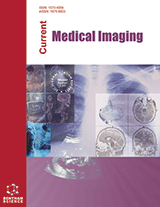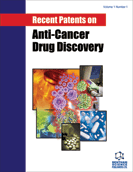
Abstract
Molecular imaging with various biomarkers plays a significant role in the diagnostic assessment of patients with dementing disorders, by detecting functional and pathophysiologic changes in the brain. PET imaging, in particular, allows the measurements of different molecular targets, such as functional markers of neurodegeneration (glucose metabolism), markers for pathological aggregates (such as amyloid, tau and synuclein aggregates) and neuroinflammation, and also markers of several neurotransmission systems. In the current view, neurodegenerative diseases are associated with the development of pathologic changes that play a different role in disease onset and evolution, often starting long before the onset of clinically detectable impairment. Molecular imaging represents thus a unique tool to collect relevant information contributing to accurate diagnosis, treatment and response monitoring. In this article, we review the current literature focusing on the PET radiotracers used for molecular imaging in dementia.
Keywords: Dementia, biomarkers, glucose metabolism, amyloid, tau protein, synuclein, neurotransmission.
Current Radiopharmaceuticals
Title:PET Radiotracers for Molecular Imaging in Dementia
Volume: 6 Issue: 4
Author(s): Aylin Baskin, Panteleimon Giannakopoulos, Osman Ratib, Yann Seimbille, Frederic Assal, Daniela Perani and Valentina Garibotto
Affiliation:
Keywords: Dementia, biomarkers, glucose metabolism, amyloid, tau protein, synuclein, neurotransmission.
Abstract: Molecular imaging with various biomarkers plays a significant role in the diagnostic assessment of patients with dementing disorders, by detecting functional and pathophysiologic changes in the brain. PET imaging, in particular, allows the measurements of different molecular targets, such as functional markers of neurodegeneration (glucose metabolism), markers for pathological aggregates (such as amyloid, tau and synuclein aggregates) and neuroinflammation, and also markers of several neurotransmission systems. In the current view, neurodegenerative diseases are associated with the development of pathologic changes that play a different role in disease onset and evolution, often starting long before the onset of clinically detectable impairment. Molecular imaging represents thus a unique tool to collect relevant information contributing to accurate diagnosis, treatment and response monitoring. In this article, we review the current literature focusing on the PET radiotracers used for molecular imaging in dementia.
Export Options
About this article
Cite this article as:
Baskin Aylin, Giannakopoulos Panteleimon, Ratib Osman, Seimbille Yann, Assal Frederic, Perani Daniela and Garibotto Valentina, PET Radiotracers for Molecular Imaging in Dementia, Current Radiopharmaceuticals 2013; 6 (4) . https://dx.doi.org/10.2174/1874471006666131126223411
| DOI https://dx.doi.org/10.2174/1874471006666131126223411 |
Print ISSN 1874-4710 |
| Publisher Name Bentham Science Publisher |
Online ISSN 1874-4729 |
 53
53
- Author Guidelines
- Graphical Abstracts
- Fabricating and Stating False Information
- Research Misconduct
- Post Publication Discussions and Corrections
- Publishing Ethics and Rectitude
- Increase Visibility of Your Article
- Archiving Policies
- Peer Review Workflow
- Order Your Article Before Print
- Promote Your Article
- Manuscript Transfer Facility
- Editorial Policies
- Allegations from Whistleblowers
Related Articles
-
New Pharmacologic Approaches to Prevent Thromboembolism in Patients with Atrial Fibrillation
Current Vascular Pharmacology Antiphospholipid Antibody-Mediated Thrombotic Mechanisms in Antiphospholipid Syndrome: Towards Pathophysiology-Based Treatment
Current Pharmaceutical Design Role of Oxidative Stress in Development of Cardiovascular Complications in Diabetes Mellitus
Current Vascular Pharmacology Novel Therapeutic Strategies in Major Depression: Focus on RNAi and Ketamine
Current Pharmaceutical Design Body Mass Index in Midlife and Risk of Alzheimer Disease and Vascular Dementia
Current Alzheimer Research Is the Modulation of Autophagy the Future in the Treatment of Neurodegenerative Diseases?
Current Topics in Medicinal Chemistry Early Detection of Dementia using Risk Classification in MCI: Outcomes of Shanghai Mild Cognitive Impairment Cohort Study
Current Alzheimer Research Chondroitin Sulfate, a Major Niche Substance of Neural Stem Cells, and Cell Transplantation Therapy of Neurodegeneration Combined with Niche Modification
Current Stem Cell Research & Therapy BTX AgilePulse<sup>TM</sup> System is an Effective Electroporation Device for Intramuscular and Intradermal Delivery of DNA Vaccine
Current Gene Therapy A Rationale for Curcuminoids for the Prevention or Treatment of Alzheimers Disease
Current Medicinal Chemistry - Immunology, Endocrine & Metabolic Agents Update on Medical and Surgical Management of Intracerebral Hemorrhage
Reviews on Recent Clinical Trials Adverse Effects of Statins - Mechanisms and Consequences
Current Drug Safety Immunological Mechanisms of Neuropsychiatric Lupus
Current Immunology Reviews (Discontinued) Oxidative Stress and Neurodegenerative Diseases: Looking for a Therapeutic Solution Inspired on Benzopyran Chemistry
Current Topics in Medicinal Chemistry Importance of P-gp PET Imaging in Pharmacology
Current Pharmaceutical Design Advances in Translational Pharmacological Investigations in Identifying and Validating Molecular Targets of Natural Product Anticancer Agents
Current Cancer Drug Targets Dementia After Age 75: Survival in Different Severity Stages and Years of Life Lost
Current Alzheimer Research Alzheimers Disease: Interactions Between Cholinergic Functions and β- amyloid
Current Alzheimer Research New Developments of Clinical Trial in Immunotherapy for Alzheimer's Disease
Current Pharmaceutical Biotechnology Microglial Integrity is Maintained by Erythropoietin Through Integration of Akt and Its Substrates of lycogen Synthase Kinase-3β, β-Catenin, and Nuclear Factor-κB
Current Neurovascular Research






















